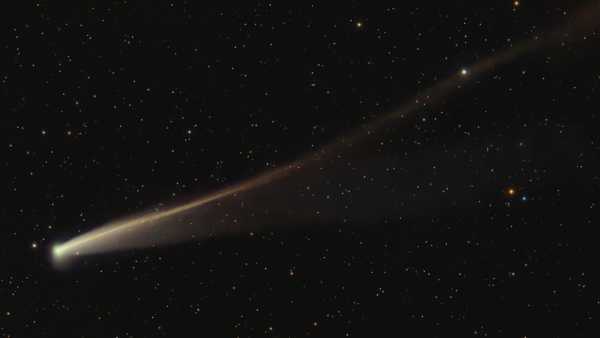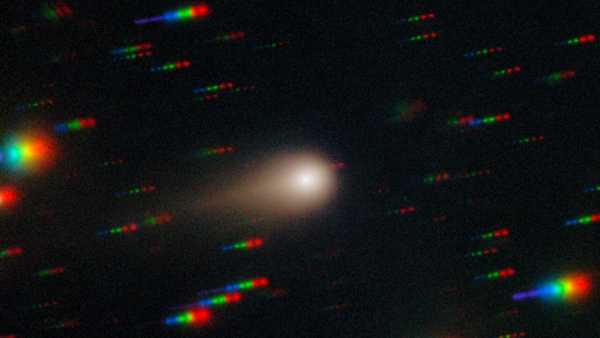
An artist's impression of a dead galaxy compared to the Milky Way. (Image credit: NASA/ESA, Z. Levy (STScI))
Our universe is home to many stellar graveyards—dead galaxies filled with the burnt-out remains of once-shining stars. But one of these ancient galaxies appears to be emerging from oblivion.
A new study has found that a dead galaxy is emitting mysterious flashes of light — behavior that should have been a thing of the distant past. Two new studies describing the shocking discovery were published Jan. 21 in The Astrophysical Journal Letters.
The researchers report that this intriguing burst is a type of cosmic phenomenon known as a fast radio burst (FRB) – short bursts of radio emission that can outshine an entire galaxy for a few milliseconds before fading away completely. Some are one-off events, while others recur at regular intervals. FRBs are also being investigated for their relationship to supernova explosions, which signal the death of massive stars. They are therefore more likely to occur in places where star formation is underway – in young, active galaxies where there is enough gas and dust to form new stars.
“Of the thousands of FRBs detected so far, only about a hundred have been matched to their host galaxies,” Tarraneh Eftekhari, a co-author of both new studies and an astronomer at Northwestern University, told Live Science. “And these galaxies tend to have high rates of star formation, which means more stars going supernova.”
But then Eftekhari and her team zeroed in on the new, repeating burst, combining 22 signals recorded from February to November 2024 by the Canadian Hydrogen Intensity Mapping Experiment (CHIME), a network of radio telescopes in British Columbia. The results trace the bursts to an unexpected source: the outskirts of a dead, 11-billion-year-old galaxy that was thought to have long since stopped forming stars. But that doesn’t necessarily mean it’s starting to come alive again.
“This observation from a very dead galaxy suggests that there must be some other mechanism that produces FRBs,” Eftekhari said. “This discovery contradicts the more simplified model of FRBs that has been around for a long time.”
Space “scum”
FRBs also tend to occur near the centers of galaxies, making this outlier even more unusual, said study co-author Vishwangi Shah, an astronomer at McGill University. “All of these unexpected aspects together make this FRB an outlier in the broader population,” Shah told Live Science.
The team has some ideas about what might be causing the burst. One possibility is that two old stars collided. Another is that a white dwarf — the compressed remnant of a dead star — might have spontaneously collapsed. Either way, the new discovery leaves many questions about the nature of FRBs.
More CHIME telescopes will be launched in the coming months, with the goal of adding hundreds more bursts to the FRB catalog, Eftekhari said. “We will be able to scale up the study of even more of these events and track them to different types of galaxies,” she added.

Jenna AhartSocial Links Navigation
Jenna Ahart is a writer for
Sourse: www.livescience.com





